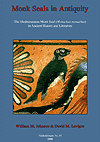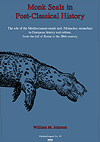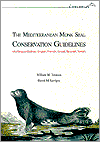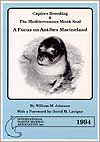 |
|
Dedicated to Monk Seals and their Threatened Habitats |
MONK SEAL LIBRARY – RECOMMENDED READING |
|
  |
Johnson, William M. and David M. Lavigne. 1999. Monk seals in antiquity. The Mediterranean monk seal (Monachus monachus) in ancient history and literature. Mededelingen 35. The Netherlands Commission for International Nature Protection, Leiden: 1-101., 17 figs.• PDF edition (
|
 |
Johnson, William M. and David M. Lavigne. 1998. The Mediterranean Monk Seal. Conservation Guidelines. Multilingual Edition. International Marine Mammal Association Inc., Guelph, Ontario, Canada. pp. 152.• PDF ( In recent years, conservation of the Mediterranean monk seal has been beset by poor coordination and information exchange. Arguably, this has created a climate in which fragmented and controversial actions have been able to thrive. Proving particularly contentious have been captive breeding and translocation initiatives, approved and funded without adequate consultation or review by the wider scientific and conservation community. Such controversies have served to cloud the conservation agenda and to divert attention, labour and scarce resources from more urgent priorities. In seeking to identify possible solutions to these problems, the authors compiled the Conservation Guidelines, based exclusively on international conference recommendations. Spanning over sixteen years of scientific research, field experience and informed debate, these reflect an extraordinary and encouraging consensus of opinion on conservation strategy for Mediterranean monk seals. The original English-language version, published in 1995, has now been complemented by translations in French, Greek, Spanish and Turkish. The new edition also lists individual and organisational endorsements of the Guidelines, of which 78 have been received to date. |
 |
Johnson, William M. and David M. Lavigne. 1994. Captive Breeding and the Mediterranean Monk Seal – A Focus on Antibes Marineland. International Marine Mammal Association Inc., Guelph, Canada. pp. 44.• PDF ( An in-depth look at a commercial oceanarium’s attempts to capture Mediterranean monk seals, ostensibly for captive breeding. |
© 2018 monachus-guardian.org. All Rights Reserved
|
 1.6MB)
1.6MB)